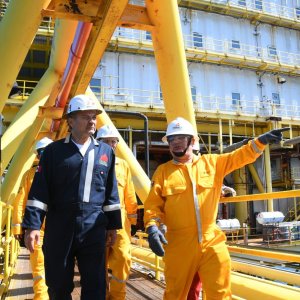Why Sustainable Value Chains Are Gaining Importance in Mexico

STORY INLINE POST
As climate change awareness and sustainability requirements expand, organizations are increasingly exposed to scrutiny from consumers, regulators, and investors. The EY Future Consumer Index 2021 revealed that over 76 percent of consumers consider brand transparency regarding the environmental impact of products as part of their consumption decisions. Consumers are demanding a more sustainable supply chain response. As such, companies are expected to identify and account for issues in their supply chain, such as modern slavery, carbon emissions, and biodiversity loss from desertification and deforestation.
Not only this but the global number of regulations and standards focused on environmental, social, and governance (ESG) factors has almost doubled in the last five years. Companies are now setting measurable and verifiable decarbonization targets. Sustainability-based disclosures and compliance requirements will accelerate as pressures from stakeholders intensify ahead of the 2030 and 2050 deadlines for most goals. In Mexico, for example, 30 percent of states have published fiscal measures in favor of reducing GHG emissions or "green taxes.” Companies are already facing repercussions for non-compliance, in addition to losses in market share and reputational damage.
Numerous private companies in Mexico are a key link in the value chains of companies based in the US. As such, their interest in ESG issues is also fueled by this close commercial relationship and the increase in sustainability requirements in the US. According to Mexico’s Ministry of Economy, between 2015 and 2019, an average of 85.30 percent of exports of intermediate goods from Mexico have been destined for the US.
How to Promote Sustainability in Value Chains
All organizations will begin their sustainability journey from various stages of development and intricacy as they move toward their net-zero targets. While developing a sustainable supply chain is complex, strategies benefit from an integral approach that includes a diagnosis, stakeholder engagement, integration of best practices, and disclosures. A comprehensive action plan could include:
- Assessing the materiality to prioritize the most pressing issues by consulting the most relevant stakeholders. These analyses help boards understand which ESG initiatives are most relevant within the company’s operations and expected to drive financial value, while considering international frameworks, such as the principles of the United Nations Global Compact and the Sustainable Development Goals (SDGs). The SDGs could represent at least US$12 trillion annually in market opportunities; they have the potential to drive innovation, economic growth and development on an unprecedented scale.
- Expanding existing sustainability goals beyond direct operations to include supply chain levels. With developing regulations for non-financial reporting, organizations must account not only for their operation’s direct and indirect emissions (Scope 1 and 2) but for the indirect (Scope 3) emissions their supply chain generates. To this end, sustainability criteria must be integrated in the purchasing process and when choosing providers.
- Aligning resources, structures and processes to permeate the issue of supply chain sustainability throughout the organization. The alignment of these criteria throughout the organization reduces risks and optimizes investment. Human and financial resources dedicated to supply chain sustainability can increase the chances of program success, given the technical expertise and time commitments required.
- Training management and suppliers on best market practices. Capacity building and knowledge sharing across the organization and with suppliers can help make a case for sustainability and drive innovation. Training and synergy are very important, especially when providers are small or medium-sized companies without sufficient infrastructure to do it on their own.
- Leverage buying power and influence to bring about changes toward sustainability in the supply chain. By asking providers to be accountable for their own environmental impact, organizations can work toward more sustainable supply chains. There are many areas of opportunity in this regard, especially in the consumer industry and retail sector.
- Invest in diverse and inclusive supply chain partners. In some geographic areas, working with small and diverse businesses can help ensure compliance with commitments or applicable regulations. Adopting this type of alliance can provide a competitive advantage and an opportunity for innovation, generate direct economic benefits for local communities, and reinforce the company's commitment to the communities in which it operates or sources.
- Disclose supply chain information beyond independent non-financial reporting mechanisms. Every day, more companies are working to publicize the sustainability of their products, evaluating their entire value chain. To ensure the reliability of data, third-party verification and international standards have become increasingly relevant for non-financial reports. EY has helped develop digital tools that fulfill this function for various organizations.
- Develop technology to increase the transparency of the company and reliability of its disclosures. Technological solutions can enable a comprehensive assessment of supplier performance and increase the organizational alignment around supply chain performance metrics, purchasing decisions, and economies of scale. For example, EY helped increase the transparency of a luxury cosmetics company by implementing an online platform to connect suppliers, map supply chains, and collect relevant information to improve supply chain insight and quality. EY also aided a consumer products company launching a platform to assess ESG data from its suppliers, as well as develop a strategy for integrating sustainability into its internal purchasing process.
As climate change mitigation gains in importance, ESG and sustainability requirements will not stop at regulatory frameworks and compliance. For all companies, sustainability will become a source of value creation for its stakeholders. Organizations will be able to create value by identifying opportunities for competitive advantage and protect this value by responding to key risks and transitioning from declining revenue risks. To achieve this, companies must adopt comprehensive strategies that do not stop at their own operations but contemplate their supply chain as well.
























